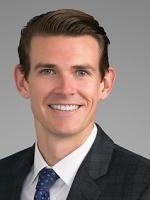A California Superior Court judge recently issued an order granting the Service Employees International Union’s (“SEIU”) petition for writ of mandate under the California Public Records Act (“CPRA”) and ordered the California Department of Public Health (“CDPH”) to produce the names and personal home addresses of approximately 180,000 healthcare employees who hold licenses or certificates issued by CPDH. The order requires the production of this personal contact information no later than May 18, 2018.
CDPH regulates healthcare facilities and licenses four types of allied health professionals including certified nursing assistants (“CNAs”), home health aides (“HHAs”), certified hemodialysis technicians (“CHTs”), and nursing home administrators (“NHAs”) (collectively “CDPH licensees”). CDPH licensees are employed by various healthcare facilities throughout California, including hospitals, skilled nursing facilities, and long-term care facilities. Unlike certain other classes of individuals subject to state licensure, the above licensees receive no notice that their personal contact information is subject to public dissemination, or were offered the opportunity to provide a non-personal business or other address in lieu of a private address. In contrast to other types of professional licensees and registrants, CDPH licensees and certificate holders are not subject to any statute, regulation, or rule mandating that their contact information be made public or available to third parties. Consequently, in the significant majority of instances the contact information that exists in CDPH’s files consists of personal home addresses – private information that is recognized as deserving of protection under the California Constitution. Likewise, it is arguably exempt from disclosure under the CPRA, which exempts “[p]ersonnel, medical, or similar files, the disclosures of which would constitute an unwarranted invasion of privacy” and because the public interest served in not disclosing these individuals’ personal home addresses outweighs any public interest that would be served by disclosing such private information. Notwithstanding these important and sensitive privacy interests, the court ordered CDPH to produce the personal contact information of these CDPH licensees to SEIU. CDPH did not appeal the court’s ruling. Accordingly, CDPH’s production of this information to SEIU appears imminent.
SEIU is a labor union primarily in the business of organizing healthcare employees. SEIU will not doubt use this information to contact unrepresented employees and seek to have them sign union authorization cards. Under the National Labor Relations Act (“NLRA”), the federal labor law governing labor-management relations, a union may file petition with the National Labor Relations Board (“NLRB”) requesting that the government conduct an election to determine whether employees wish to have the union be their exclusive bargaining representative if at least 30% of the employees in the bargaining unit have signed union authorization cards. Under the NLRA, unions are not entitled to the contact information of employees unless the union has satisfied this 30% showing and the NLRB orders an election in a unit appropriate for purposes of collective bargaining.
The CDPH’s production of personal contact information for hundreds of thousands of healthcare employees will make it substantially easier for SEIU to organize hospitals, skilled nursing facilities and other health facilities in California. Health facilities should expect that union organizers will contact employees at their personal homes and engage in union organizing efforts away from the workplace. There have been many cases in which unions have misused the home address information they have received to intimidate and coerce potential voters. See e.g., Goffstown Truck Center, Inc., 356 NLRB No. 33 (2010); Brown & Sharpe Mfg. Co., 299 NLRB 586, 590 (1990); Kohler Co., 128 NLRB 1062, 1106 (1960); Int’l Ass’n of Machinists, 189 NLRB 50, 54 (1971). SEIU will also likely use this information to target specific health facilities that may vulnerable to a union organizing due to potential labor relations issues.
In the meantime, healthcare facilities should consider taking preventative steps, including the following:
- Develop a strategic labor relations plan. Executives, general counsel, and key members of management should review the organization’s options so that company officials can make strategic decisions in light of the disclosure of personal contact information to SEIU.
- Consider communicating with employees in advance of early warning signs of union organizing. In light of the CDPH’s anticipated disclosure of employee contact info, organizations should consider communicating with employees about this release of information, SEIU and unions in general, and your organization’s labor relations philosophy.
- Train managers/supervisors. Topics for such training may include the employer’s position on unionization, the significance of union authorization cards, early warning signs of union activity, and what and when your organization may communicate lawfully with employees regarding union organizing drives and signing union cards. Every individual who meets the definition of a “supervisor” under the NLRA should be trained.
- Eliminate potential labor relations issues. Conduct a legal/human resource vulnerability assessment to identify, address, and eliminate legitimate workplace issues that SEIU and other unions will seek to exploit for their advantage.
- Conduct bargaining unit and supervisory analyses. Supervisors are not eligible to vote in a NLRB election and, as agents of the employer, the employer is responsible under the NLRA for their statements and actions. The employer also may use or need individuals to communicate on its behalf (e.g., while off shift or in languages other than English). Consider adjustments based upon practical and legal considerations.
- Identify and train a rapid response team. Consider having a designated team that is prepared and ready to act in the event of union activity. These core members of management would have in-depth knowledge about what the employer can and cannot say or do under the NLRA. The team can communicate quickly and effectively with employees on key issues.



 />i
/>i


